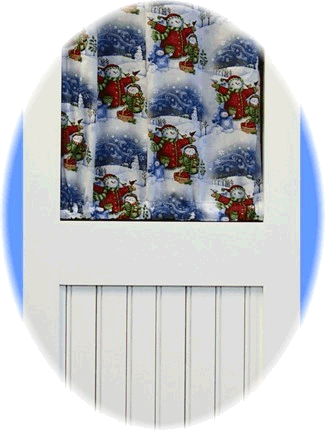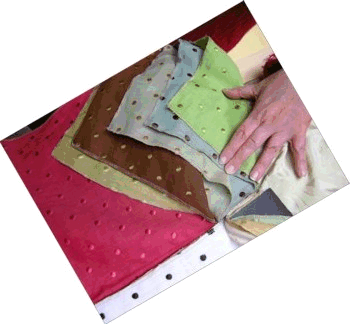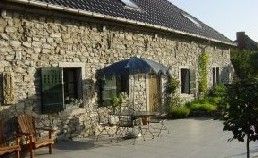Archive for the ‘Doors’ Category
Fabric prints and solids for both window shutters and interior doors are a really neat idea because it becomes so easy to change a room’s appearance with beautiful patterns and textures- Change the fabric panels throughout the seasons or by whim to update home decor without changing much of anything else. On display in our office we now feature this snowman print fitted on our 6070 series closet door. The wood frame and authentic beadboard is finished in brilliant white- A perfect winter wonderland for a little one’s room.
We can tailor your supplied fabrics for shutter frames, folding screens, and the Kestrel series of closet doors specifically made for fabrics. We also are offering Richloom fabrics which are found at many fine fabric stores. You might even consider crafting your own panels as a sewn or even as a no sew project.
For more information about adding fabrics to Kestrel Shutters and Doors call or write today. 1/800-494-4321 sales@diyshutters.com
Richloom Platinum fabrics shown.
Pattern: Bingo
Colors available from right to left: Spring, Lagoon, Surf, Earth, Citrine, Berry, Alabaster. Also available are Coral, Cameo, Natural, Butter and Mist.
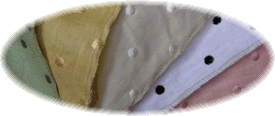

A naturally beautiful and renewable choice – Wood shutters and doors by
Kestrel Shutters & Doors, Inc. www.DIYShutters.com 1-800-494-4321 / sales@diyshutters.com
Soup & Nuts, Building a Shutter & Door Business.
Kestrel was started entirely from scratch back in 1988 by my partner and me. We began developing some different wood products namely radius arbors, pergolas, for entrance ways and folding screens. We officially opened for business on May 4, 1989 under the name of Kestrel Manufacturing. We decided to focus only on selling folding screens and so we set out advertising them. The folding screens drew reader interest in seeing our advertisements and we began to be flooded with brochure requests through the mail. With one of our folding screen designs being an operable louver shutter style one customer along the way asked us if we would make interior operable louver window shutters for them. One thing led to another and we soon found ourselves in the shutter business. These were the days of paper media as the World Wide Web was not yet commercialized.
Back in the early days of growing this business, “soup and nuts” referenced in the article title refers to dinner meals that my partner and I ate often. That is Lipton Cup of Soup and a piece of rye bread toast with peanut butter. An unusual but rather tasty combination, it was our economical and a quick dinner meal to make in order to just keep working into the night running the shop making the products while saving money to build the business.
We learned a lot making operable louver shutters and in no time we developed our brand which included a knock down shutter kit. We named the product The Original DIY Shutter™ kit. It was developed in order for the end user to paint or stain the shutters easier as well as allowing the end user to save some money by assembling the shutter frames themselves. Since operable louvered shutters were tricky to paint by hand and with the amount of labor involved in assembling the product it was timely to produce. In the early days we would sit hand assembling the components and we realized that anyone could do the same while watching TV. DIY Shutters™ were a smart solution.
Many good opportunities came our way in projects to build and print media articles. 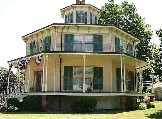 The Rich-Twinn Octagon House was one of many historic shutter replications that we furnished. We duplicated several rectangular as well as arched top shutters that featured both horizontal and vertical operable louvers specific to this project.
The Rich-Twinn Octagon House was one of many historic shutter replications that we furnished. We duplicated several rectangular as well as arched top shutters that featured both horizontal and vertical operable louvers specific to this project.
In 1996 an article was published in the New York Times about shutters and we were listed as a source. Not long after the article in the New York Times, the editors at Martha Stewart Living who read this article all came together with the same idea. 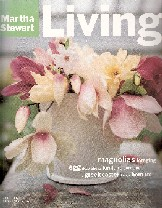
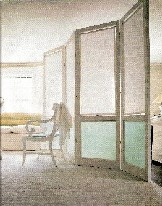 The idea was to see if Kestrel could make, of all things, a folding screen. This screen would be one of several varieties shown for an upcoming article about the history of folding screens and their many uses. It was a full page photograph that captured the attention of many. We were right back to the original product that we had started out with. We received many orders thanks to that one article. For many years after the June 1996 issue we worked with several of the editors from Martha Stewart Living to make different items with our basic shutter frames, as well as interior shutters too, that they would need for a variety of their creative and informative articles.
The idea was to see if Kestrel could make, of all things, a folding screen. This screen would be one of several varieties shown for an upcoming article about the history of folding screens and their many uses. It was a full page photograph that captured the attention of many. We were right back to the original product that we had started out with. We received many orders thanks to that one article. For many years after the June 1996 issue we worked with several of the editors from Martha Stewart Living to make different items with our basic shutter frames, as well as interior shutters too, that they would need for a variety of their creative and informative articles.


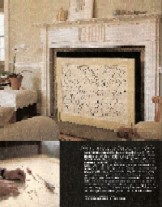
One of these articles would show how to make dot cut outs in the June 2000 issue. It featured a fireside screen with an Art Deco hole cut out pattern made with a basic shutter frame and two bifold pairs of white circle cut out shutters for a kitchen window.
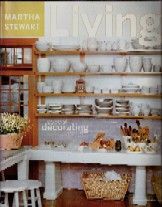
Later that year another article had a clip of our interior shutters in a kitchen room for the article titled ‘The Color Blue’. This was in the September 2000 issue.
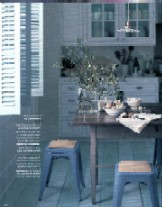
We even made a shutter that was fitted to make a large mantle top mirror. A duplicate hangs in our office to this day.
The Hollister 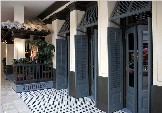 store was one of several other retail installations that our shutters were produced for to provide the look that they wanted. When the Hollister stores were in the planning stages I went to see the Abercrombie demo store set up with many old, authentic, antiques. Everywhere were antiques such as steamer trunks, carpets and furniture that would all be reproduced to look just as these worn originals for each of the future stores to be built.
store was one of several other retail installations that our shutters were produced for to provide the look that they wanted. When the Hollister stores were in the planning stages I went to see the Abercrombie demo store set up with many old, authentic, antiques. Everywhere were antiques such as steamer trunks, carpets and furniture that would all be reproduced to look just as these worn originals for each of the future stores to be built.
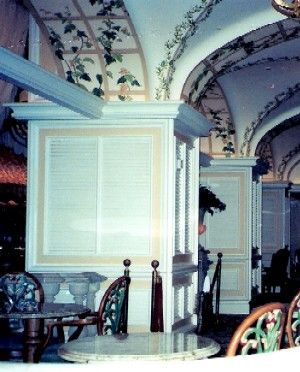
Other retail projects have included these louver inserts made years back for a restaurant located in the Las Vegas Bellagio Casino next to the beautiful Murano Glass ceiling. The white louvered wainscot wrap each pillar section rising to the top.
Our goal was to build a business that would provide a great quality product with a good crew of people. Now after all of these years we are looking towards new goals as we keep Kestrel going strong. Since those early days we have added additional product lines to meet the needs of our customers and to diversify the business in making items that would be complementary such as louver inserts, closet doors as well as being the first in producing styles of shutters found only in Europe.
Our shop once consisted of a narrow isle about three to four feet wide in a garage where we made the first orders. All of these years later we have grown and today we now have a considerable amount of shop space. The first pieces of equipment that we owned were a small router and a mitre saw. While we now use specialized equipment to make the product lines faster and better we still hold on to those smaller original pieces which remind us of how it all began.
Photo credits: Martha Stewart Living Omnimedia, Inc. -Magazine Covers as well as articles Newstead Historical Society, NY- Rich-Twinn Octagon House Brendan Smialowski for The New York Times- Hollister store, evoking a beach house. Also to the customers of Kestrel Shutters & Doors, Inc.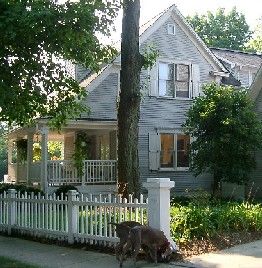
![]() The company name Kestrel is the name for the smallest member in the falcon family. Just recently I took this picture of two Kestrel silhouettes perched in the tree, most likely a male and female.
The company name Kestrel is the name for the smallest member in the falcon family. Just recently I took this picture of two Kestrel silhouettes perched in the tree, most likely a male and female.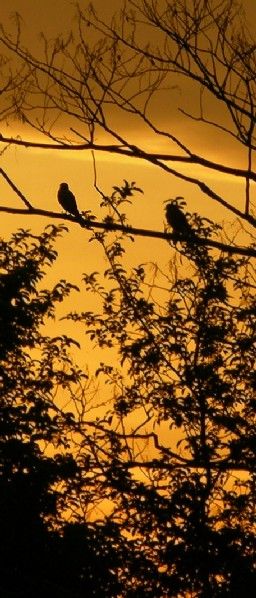
It was neat to see these two enjoying the evenings amber glow. American Kestrels were once seen in abundance throughout our area but over the last ten years the birds population has declined. What was once common to see these small birds perched on telephone wires along the country roads almost altogether disappeared over the last several years. The good news is that they seem to be on the comeback and I can see evidence of their reappearance in my travels. You can find more information about Kestrels as well as other information about all of the beautiful raptors at Hawk Mountain located in Kempton Pennsylvania. Their website is www.hawkmountain.org

A naturally beautiful and renewable choice – Wood shutters and doors by
Kestrel Shutters & Doors, Inc. www.DIYShutters.com 1-800-494-4321 / sales@diyshutters.com
Now in our 19th Year
May 4, 2008
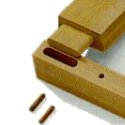 Defining the Mortise and Tenon, Old and New
Defining the Mortise and Tenon, Old and New
The mortise and tenon joint is one of the oldest methods of joining two pieces of material together and certainly is still very much a mainstay in fine cabinetry work today. There are many references to mortise and tenon joinery throughout the ages. Historical monuments such as Stonehenge, the hulls of early boat and ship vessels, and even Egyptian sarcophagi were made with this frame construction. Whether stone, metal, or wood, the construction method is still very much the same.
The mortise is essentially a slot or a hole cut into or through one piece of material. The tenon is an extension milled onto another piece of material that will be fitted into the mortise. The outer dimension of the tenon matches in both shape and size to the inside dimension of the mortise. When the tenon is inserted into the mortise, the two pieces of material are joined.
In traditional woodworking, door and shutter frame mortises are milled into the vertical inside of each upright frame member. This upright frame member is called a stile. Mortises are placed where horizontal cross rails intersect. Cross rails, or simply rails, are the horizontal frame members. Rails are made over sized in length allowing for the ends to be milled down creating a tenon.
A well made deep fitted mortise and tenon is very strong since there is quite a bit of surface area contact between both pieces of wood. A snug fitting joint is the best as it will help to prevent the frame from racking. With the use of pegs, wedges or both wedges and pegs, as shown in the pictures of the shutters below, the parts are held tightly together creating a fastened joint.

These aged shutters are well over 100 years old. They are great examples to show mortise and tenon construction with the use of both peg and wedge fastening methods.
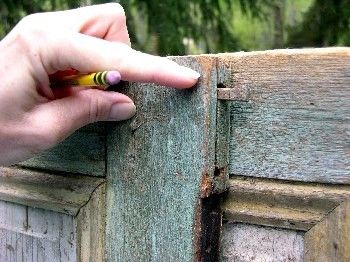
The shutter frames are fastened together with both pegs and wedges. The wedge is inserted in the opposite side of where the tenon was inserted. The peg is just below my thumb.
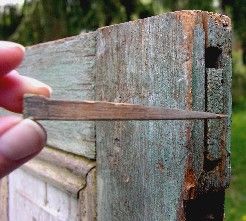
I pulled this wedge out for you to see. It is pretty amazing that someone a long time ago cut this and at least 11 more, all fitted perfectly by hand, for each pair of these exterior window shutters.
The mortise shown on these old shutters is called a through-mortise simply because it is open on both sides, milled all the way through the stile. This mortise and tenon was made to fit a wedge. The wedge pinches the tenon into the mortise slot and holds the joint together much like a wedge shape door stop holds a door open or shut.
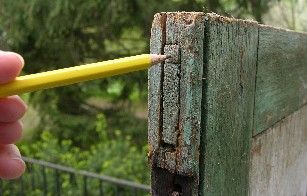
Through mortises are seen on objects made in periods in time when milling machinery was not available or advanced enough in order to mill the material quickly and easily.
With the advent of machinery, through mortises for the most part were replaced with “pocket” mortises. Pocket mortises are just how the name sounds. The pocket mortise is open on one face only for the tenon to be received.
We have seen wedges used on many old shutters that we reproduced. However, since we use the pocket mortise and tenon method we only need to use pegs. Pocket mortises are very good for outside applications since end grain is not exposed. The reason that end grain should not be exposed is because just like a drinking straw will suck up water so does end grain. End grain is essentially very much like many tiny straws bundled together that supply the tree and it’s canopy with water. When end grain is exposed and proper maintenance is not provided it will eventually lead to deterioration.
More then likely these old shutters would still be hanging if they had had just a little more maintenance with finishing as it appears that this paint is the original finish. For being as old as these shutters are they are still held together rather well because of the well made mortise and tenon construction.
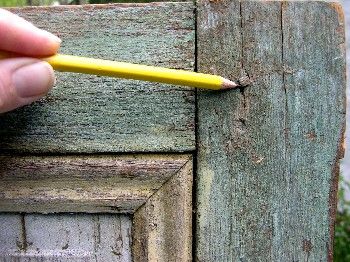
Pegs are inserted into a hole that has been drilled through the face of the shutter through the mortise and tenon joint. The peg acts much like a cotter pin locking the two pieces together.
The mortise and tenon joint is a very old construction method and still one of the best woodworking types of joinery today. Our interior shutters, exterior shutters as well as all of our doors are assembled using this method of joinery.
When we assemble door and shutter frames a light application of glue is applied to the mortise and tenon joint areas. Then the parts of the frame are fitted together along with the components that will be inside of the frame such as operable or fixed louvers or even solid wood panels. The shutter or door is then clamped together to tighten and flush all of the joints. When the joints are flush and tight a hole is drilled through the mortise and tenon for the pegs. After the pegs are inserted the joint is now locked together and the clamps are released. At this point this joint can take extreme force and still not pull apart and it will undoubtedly last as long as the old shutters shown in this post, if not longer.
Did you know? Just because a wood product can mention made with “mortise and tenon construction” does not imply that it is good unless it is properly made. When mortise and tenon joints are too loose, improperly fitted, the joint will fail and the frame will rack.
Post written by Jewel Foulds, April 2008
Spring is no doubt one of my favorite things. Nature is fresh and full of color. I was lucky to capture this picture just recently. This spring time beauty known as ‘Bleeding Heart’ is an Old Fashioned favorite in many gardens.

Kestrel Shutters & Doors, Inc. www.DIYShutters.com
Celebrating our 19th Year in business on May 4, 2008
The choice between installing bifold doors and sliding closet doors depends on a few different factors. The use of the closet, the space around the closet, and, of course, your personal preference, are all considerations.
What is the difference between bifold doors and sliding closet doors? The first thing to do is to look at how these two types of doors function. Bifold doors, just as the name implies, are a pair doors that are hinged together and fold up together. This means that you can take all of the doors and fold them up to the sides so that they are out of the way and you have almost full access to your closet. With sliding closet doors the doors slide back and forth on multiple tracks and can be stacked up, one in front of the others. Since the doors never fold out of the way, fully exposing the entire area, there will always be some part of the closet blocked.

What is in your closet? Will the closet be for clothes, storage of seasonal items, or used as a pantry? If you will only need to get to one part of the closet at any time then a sliding or a bifold will work well for you. If you need full access to the closet, or you just want to be able to open the doors and see everything at once, then bifold doors are your best choice. Keep in mind that sliding doors can be removed if you should need full access once in a while.
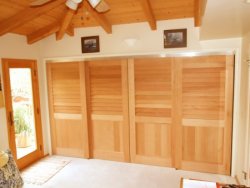 What is around your closet? Is there limited space around your closet? Is there the concern that if you open up the doors they might hit furniture or artwork on your walls? Do you want a streamline fit, rather then doors folding out into the room? If this is the case then sliding closet doors are probably your best option.
What is around your closet? Is there limited space around your closet? Is there the concern that if you open up the doors they might hit furniture or artwork on your walls? Do you want a streamline fit, rather then doors folding out into the room? If this is the case then sliding closet doors are probably your best option.
Which do you prefer? Another point, just as important as those mentioned above is, simply put, which do you prefer? Even if one of the door installation types is not completely ideal for you, it may still be worth it if you really like the look enough. Regardless of which track hardware you choose, you can still pick whichever style of door you like the most. Every style of door that we offer can be mounted with hardware for either bifold doors or sliding doors .

A naturally beautiful and renewable choice – Wood shutters and doors by
Kestrel Shutters & Doors, Inc. www.DIYShutters.com 1-800-494-4321 / sales@diyshutters.com
We’ve all seen them. The closets that we use to hide things. It’s your washer and dryer surrounded by a growing mound of clothes. Your childrens toys that have multiplied and your hoping will be contained in the closet. Or perhaps it’s that slightly embarrassing collection of black velvet Elvis paintings you’ve collected over the years.
Maybe you actually use your closet to hold clothes. Did you recently go to great lengths and expense to organize your closet with an array of shelves, slots and drawers so that each and every shoe has it’s own little home?
Regardless of what your closet holds, the doors all seem look the same. Flimsy, hollow white things, mass produced in metal, finger jointed wood or some unknown plastic. They never seem to close properly either. “But hey! That’s all that they had at the building supply center”
That may be so, but that is no longer a reason to settle. Here at Kestrel we offer you something else: Real Doors, made from Real Wood, by Real People.
We hand build our pegged, mortise and tenon closet doors in a number of different designs that will compliment your unique style.
Is your room too dark? Choose a closet door style that allows for glass or mirrors. This will help reflect what light is in the room and brighten it up. Our designs feature louvers, panels and bead board in the lower portion of the door to help keep everything grounded.
Plantation Louvered doors are a great way to add charm. An added benefit is that they allow airflow between rooms. This can be very important if you have a heater or other appliances that require a specific amount of air flow to avoid burning out.
Go with an even larger louver blade and suddenly you have transformed your bedroom in to a tropical hideaway.
Looking for something more formal? Colonial raised panel doors might be more appropriate. Switching to a flat or recessed panel will give a simple, but still traditional look.
Bead board doors remind us of a beach house or a stately Victorian. Louvers over Tongue & Groove doors for that European flair. Or maybe you have your own special design in mind. Send us your PDFs or a scan of the cocktail napkin you used to scribble on that image that has been floating around in your head. Your home deserves your doors with your style, not someone elses.

A naturally beautiful and renewable choice – Wood shutters and doors by
